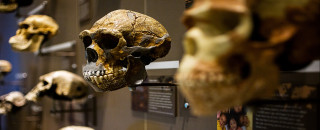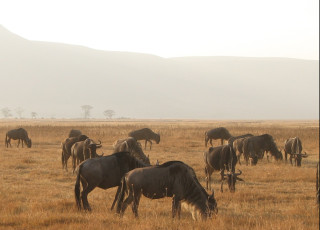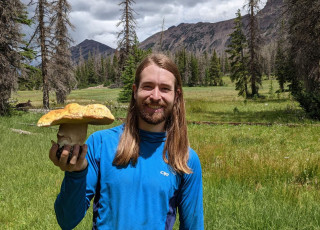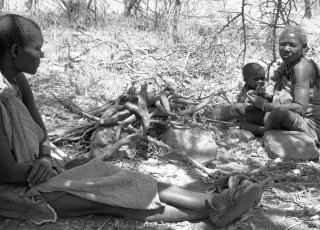Learn About Human Evolution at NHMU
The hominin wall at the Natural History Museum of Utah in Salt Lake City. ©NHMU/Credit: Mark Johnston
By Megan Mullineaux
We’re all familiar with the image. It shows a non-human ape transitioning, one character at a time, into a modern human. Some iteration of it is the first image that emerges when we enter “human evolution” into a search engine. And that is a big problem.
It’s a big problem because almost nothing about this depiction is accurate. By presenting human evolution as a predictable, linear progression, it doesn’t capture the amazing complexity and diversity of hominins. “Hominin” is a term that refers to present-day humans as well as extinct species that are more closely related to us than to chimpanzees and bonobos. One key feature of hominins is that they are adapted to bipedalism—walking upright on two legs. This image always shows a transition from walking on all fours with the weight of the upper body supported on the knuckles—referred to as “knuckle-walking”—to walking bipedally. Such a transition is contested.
The knuckle-walking character often looks suspiciously like a chimpanzee. On the surface it seems appropriate since chimpanzees, along with bonobos, are our closest living relatives. However, it’s been approximately 6-8 million years since humans and chimpanzees shared a common ancestor. Over that period the chimpanzee lineage has also been evolving. Although the last common ancestor may have looked more like a chimpanzee than a human, it’s inaccurate to visualize it as a modern chimpanzee.
This unfortunately prolific image makes it easy to forget that humans are the last surviving species out of multiple extinct hominins—some very human-like—who once walked the Earth on two legs. The fossil evidence which indicates that multiple hominin species often lived at the same time, sometimes in the same place, is the most fascinating part of our evolutionary story. Why did we outlast the other hominins? After originating in Africa, how did we spread across the globe?
A far more accurate depiction of our human story can be found right here at NHMU. The hominin wall in the Life Exhibition gives you all the juicy details. You discover which hominins were hunters, and which ones were hunted. You’ll learn how occasional interbreeding between distinct hominin species left its mark on modern humans. For example, many present-day humans still have some Neanderthal DNA. The hominin display reminds you that human evolution is far from linear. The story is complex…and it’s not over yet.
Megan Mullineaux is a graduate student at the University of Utah’s Department of Anthropology and the sales manager at the Natural History Museum of Utah, a part of the University of Utah in Salt Lake City. NHMU's mission is to illuminate the natural world and the place of humans within it. In addition to housing outstanding exhibits for the public, NHMU is a research museum. Learn more.



